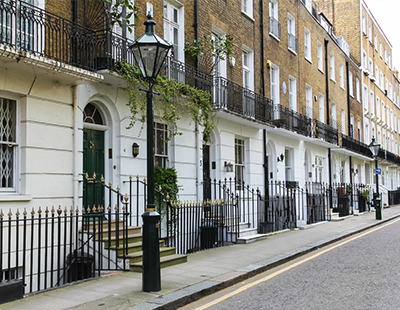The ‘race for space’ may not have been as significant a contest as first thought, new data suggests.
Figures from property data company TwentyCi shows the number of people looking to move to sparse or remote settlements actually decreased by 13% between 2017 and 2022.
Similarly, people moving to sparse, remote villages or dwellings dropped by 28%.
Meanwhile, the number of people purchasing properties in smaller urban areas in 2022 increased by 0.84% compared to 2017.
TwentyCi said in a blog post that while property exchanges are a “great metric to track,” it is only the first step to understanding whether people are still eager to move to the countryside.
It said: “While it shows us how many properties are being sold, it doesn't demonstrate underlying aspirational demand.
“If countryside dwellers don't want to sell their properties, there will be less available on the property market and, therefore, instructions sold subject to contract (SSC) and completions will be lower.
“What this data does show us is that people were still looking to move out of their urban homes.”
Despite news coverage focusing on the desire to move to the countryside for more space during the pandemic, demand data from TwentyCi also shows that the North East, London and the South East remain more popular regions for buyers than rural places such as Wales.
TwentyCi said: “This seemingly rejects the theory of the countryside growing in popularity. Until you compare it to average house price increases in the year to November 2022.
“When you whittle this down by region, you see that England, London and the South East have seen the lowest annual price change. The more rural areas are seeing a greater difference in annual house price percentage change.
“Again, property transactions are only telling us part of the story. More properties are being purchased in urban areas, but that could be heavily influenced by the rise in house prices in the more desirable regions - essentially pricing people out of the market.”
It is only when looking at time on the market data that more rural areas show their popularity, according to the research.
Using this metric, TwentyCi said, the most sought-after properties are located in the North East, Wales and Yorkshire and The Humber.
In the post-pandemic world, TwentyCi said Wales is now the “most desirable UK region” shown by property prices increasing by 8.8%, 29.5% more than the UK average. The time it takes to sell property in Wales has also fallen by 45.3%, 16.6% better than the rest of the UK.
The runner-up was the South West, with a property price increase of 7.9%, 16.3% better than the UK.
Time to sell was 44.2% faster, 14.1% faster than the rest of the UK.
Third place was taken by the North East with a property price increase of 6%, 11.6% better than the UK and time to sell was 53.4% faster compared with during the pandemic.
















.png)


.png)




Join the conversation
Be the first to comment (please use the comment box below)
Please login to comment